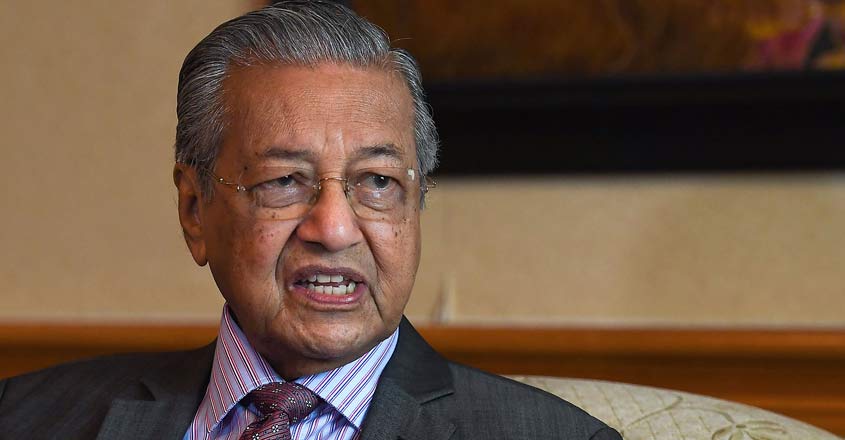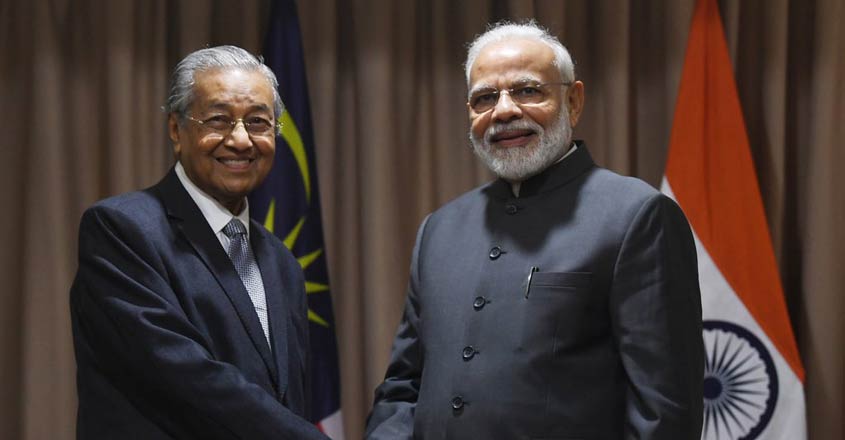Column | How Malayalis helped build Penang

Mail This Article
A good number of Malayalis claim Malaysian Prime Minister Dr Mahathir Mohamad as one of their own, given his Kerala roots. One of Kerala’s links with the Southeast Asian country goes back to the time around which the highly successful Malaysian politician’s Malayali great grandfather immigrated there.
Penang with its coastline, heritage buildings and famous hill is a popular tourist destination for Malayalis, but the first set of people from Kerala to come to the city were actually so-called convicts. The term “so-called” is used here since many historians are of the belief that political prisoners were sent to the Malaysian city. In the 19th century, convicts that had more than a 7-year jail sentence were sent from the Andaman Islands, Madras and Calcutta to help build Penang.
In his book titled Yearning to Belong: Malaysia’s Indian Muslims, Chitties, Portuguese Eurasians, Peranakan Chinese and Baweanese, Patrick Pillai writes that a number of Indian prisoners were interned in Penang to help alleviate the labour shortage in what was a booming town. “Among them were Malabaris who built Penang’s public roads, buildings and elite Muslim homes…,” Pillai wrote. The Malayalis lived in a settlement called Kampung Malabar, which is close to Kampung Kolam (no relation to the Kerala city) where the Tamils lived. The Malabaris mingled with Tamils but brought their own grooms and brides from India, according to Pillai.
Malaysian historian and author Salma Nasution Khoo also wrote about the Malayalis of Penang in her book Streets of George Town Penang. “As early convict labourers the Malabaris were reputed to have built most of the government buildings in Penang,” she wrote. “Even after Penang ceased to be a penal station, Malabari construction workers continued to be employed by Chinese and Indian contractors as well the Public Works Department until as late as the 1930s, when they built the Police Headquarters at Dickens Street.”
The Penang Hill Railway was also largely constructed by Malabaris, who also ran the service for a very long time. Malayali Muslims helped build the Penang Jail, the Mariamman Temple, a Methodist Church and ran much of Penang’s early tram services, long term Penang resident P C Kanan told
Professor Suresh Narayan of Universiti Sains Malaysia in 2001.
The Malayalis that became traders started Penang’s Chowrasta Market. The market, which has seen major renovations over the years, is no longer dominated by Indian traders.
The miracle worker

A Malayali immigrant from the Malabar is now revered in Penang as a saint and miracle worker. There is a large mausoleum built for the mystic called Dato Koyah, who came to Penang in the early 19th century. He is believed to have cured sick people with medicine conjured from leaves. As per local legends, he also gave children sweets that were made from thin air.
Born in the Malabar Coast as Syed Mustapha Idris, Koya was exiled from Kerala where he was falsely accused of abetting a murder. He became famous in Penang after he started feeding large crowds from “just a small earthen pot of porridge. The Malabari mendicant lived below a tree and dedicated his life in Penang to helping the poor.
There are even legends of him being used by the British administration to build roads “on his own.” In fact the present mausoleum stands on a piece of land that colonial rulers allotted to his followers after the mystic’s death. The mausoleum was renovated last year and remains an important pilgrimage spot for Indian Muslims in Malaysia.
Malaysian Malayalis

The Malabaris and other Malayali immigrants to what was then Malaya suffered when the Imperial Japanese Army evicted the British during the Second World War. The British masters who brought in Indians and Chinese to Malaya abandoned them when they left the peninsula. These people suffered with the Malays during the years of Japan’s brutal occupation.
The country’s Malayalis became citizens of Malaysia but never fully cut off ties with Kerala. Since Independence, Malaysian Malayalis have managed to preserve their native language in the country. Descendants of the Penang labourers became civil servants, businessmen and professionals and moved to places like Kuala Lumpur and even Singapore when it was a part of Malaysia. Although not as visible as the Tamils in the country, Malayalis have managed to achieve a great degree of success in the multi-cultural nation. This was probably the dream that was being chased by the wave of immigrants to the country that disappeared after Penang stopped being a penal station.


